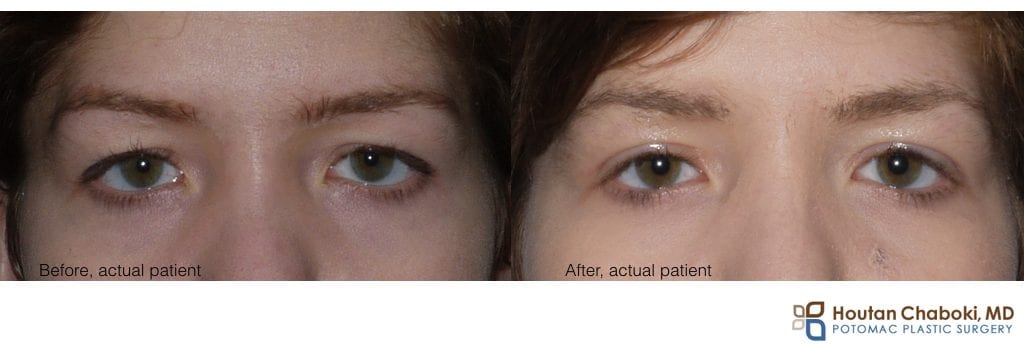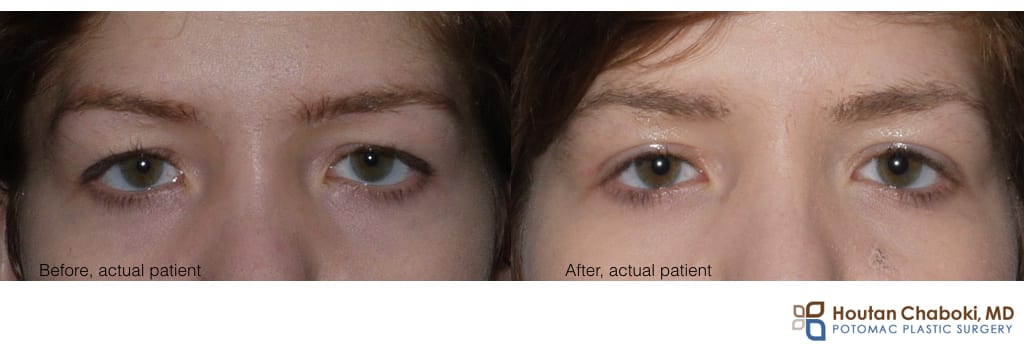Fear of anesthesia is one factor that deters patients from undergoing cosmetic surgery. The prospect of anesthesia with IV sedation or general anesthesia may give patients anxiety. Fortunately, plastic surgeons can perform a variety of plastic surgery procedures strictly via local anesthesia, defined as numbing the operative area without any sedation. Patients are awake, alert, and comfortable during these types of procedures.
Upper eyelid surgery (blepharoplasty) is one of the most common cosmetic surgery procedures performed via local anesthesia. The only discomfort patient have described during upper eyelid surgery is the initial numbing medication. The numbing medication works quickly and provides comfort during the entire procedure.
Preparation for upper eyelid surgery
Unlike procedures that require traditional anesthesia, patients do not need to fast for several hours. A light breakfast or snack is allowed before the procedure.
Upper eyelid surgery procedure
Regardless of the type of upper eyelid surgery performed to rejuvenate the eyes, patients are comfortable during the procedure while soft music plays in the background. Patients may be periodically asked by their plastic surgeon to open and close their eyes. Some patients have even fallen asleep since they were so comfortable, while many like to speak with their surgeon during the procedure. Surgery takes about an hour, then ice packs are placed to help reduce swelling and bruising.
Recovery after upper eyelid surgery
Patient are observed for short period of time before going home. Since local anesthesia doesn’t require any of the typical anesthetic medications, patients experience neither nausea nor grogginess after eyelid surgery.
Who is not a candidate for upper eyelid surgery via local anesthesia?
Most patients can have blepharoplasty with just local anesthesia. However, some eyelid surgery patients would benefit from sedation or general anesthesia, such as those:
- Experiencing severe anxiety; or
- Requiring additional cosmetic procedures – ex. facelift or endoscopic brow lift with eyelid surgery
The decision regarding anesthesia is one made by both the patient and his or her plastic surgeon. Fortunately, upper eyelid surgery is one of many cosmetic procedures which may be performed in the office via local anesthesia. On the website RealSelf.com, where patients review various cosmetic treatments, one of Dr. Chaboki’s patients shared their upper blepharoplasty via local anesthesia experience.
Interested in learning more? Contact the office to speak with an eyelid surgery specialist to help determine if you’re a possible candidate for upper eyelid surgery via local anesthesia.



Leave a Reply